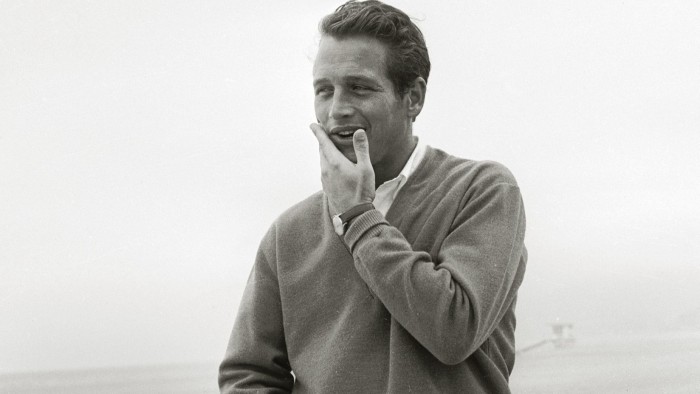Stay informed with free updates
Simply sign up to the Style myFT Digest — delivered directly to your inbox.
I have become old, and that fact has been surprisingly easy to accept. I like my middle fifties: the anxieties that haunted me when I was young grow fainter each day. Increasing proximity to death has few upsides, but it does make it easier to distinguish what matters from what doesn’t.
The fact that my clothes are growing old, however, gives me mixed feelings. Don’t get me wrong. Old clothes can look great. In fact, the best clothes, like the best buildings, gain a patina with time, which makes them more beautiful than new ones can hope to be. But looking around my closet, I notice that most of what I wear is at least 10 years old, and often much more. What I have added recently has mostly been bought second-hand. Why have I stopped buying new things?
It didn’t take much time to realise who the culprits were: my children. The money I spent on my clothes when the twins were little I now spend on their clothes, or their education, or some other bottomless teenaged need. This realisation made me indignant. I will not go quietly into dowdy parenthood. I work hard and I should treat myself to some new threads.
But the problem remains: my damn offspring sop up most of the disposable cash. Worse, if Donald Trump’s insane tariffs stay in place, everything will become more expensive. If I’m to update my wardrobe, I’m going to have to think carefully about value.
And what is value, when it comes to clothes? I’d propose that you can identify value by applying three criteria. First, any valuable item will be worth repairing. This is why denim can be such great value: not only can it be repaired, it often looks better when it has been.
Shoes are a great example here. High-end trainers are low-value by definition, because they can’t be resoled like leather shoes. The point is generalisable. When considering an item, think: if this broke down, would I pay to have it properly fixed, or would I throw it away?
Second test: however attractive the item may be, it can’t be valuable if it isn’t versatile, because you won’t get enough use out of it. Chalk up another win for denim (particularly black jeans, an incredibly mix-and-matchable item). A chunky pair of dark brown English brogues can be formal or informal, work or weekend, and if you keep them polished they improve with age. Medium-weight turtleneck sweater, in an earthy shade of lamb’s wool? Hard to think of something it doesn’t go with. In general, the most versatile colours, and therefore the most valuable, are blacks, greys, browns and blues.
The final criterion, of course, is that you have to be able to afford the thing. Yes, I want a bespoke sports jacket from Anderson & Sheppard. Yes, it would be infinitely renewable by careful repair. Yes, it would go with almost everything else I wear. And on a dollar-per-use basis, it’s probably cheaper than most things I own. But I don’t have $6,000 handy, and if I did, I couldn’t get away with spending it on a jacket. What kind of middle-class dad does that? There are some divides that just can’t be crossed.
Some specific items that are great value: Red Wing Moc boots, which look cool but are also functional for walking and work, can be resoled, and cost about $300. Sabahs, a sort of Turkish shoe-slipper hybrid, with infinite colour choices, starting at around $200. Any really flattering jacket. Trousers in thick flannel. Chambray and madras shirts.

Low-value items? I’m going to get in trouble here, but most cashmere or even merino knitwear ain’t worth the price. It is too delicate, doesn’t wear as well as you hope, loses its shape and is hard to clean. And it’s actually less versatile than lamb’s wool. A similar story is true for suits made of the finest cloth: “super 180s” are super-expensive and super-delicate, and as a result super-hard to wear under normal circumstances.
I tend to think that good evening rigs are bad value, too. You can get a tux that is good enough for not that much money, and if you pay up a bit for the shoes, shirt and tie, and maybe some nice studs, no one will notice the suit itself. And how often do you wear a tux anyway? On the other hand, perhaps the giddy high from wearing something really nice on a really big night out is irrational but worth it. Even value has its limits.
Follow us on Instagram and sign up for Fashion Matters, your weekly newsletter about the fashion industry
